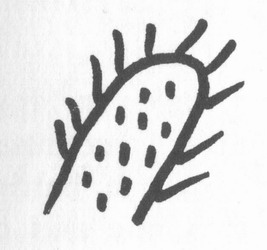
A Tsilhqot’in Account of Smallpox

By Henry Solomon with Terry Glavin
"These white people, they bring blankets, from people who die of smallpox," Henry said. "Then he wrap them up and he sell them to these Indians, then the Indian, he didn’t know, he just sleep on it, them blankets. Pretty soon he got them sickness, and pretty soon the whole camp got it. So pretty soon my grandmother and his sister, they’re the only one that survive."
"She stayed with them dead bodies one week. She remember real good, and she tell me stories. Emeelee, I guess she’s older than my grandmother."
Galeen, from Catherine, and her sister Emeelee, from Emily. Galeen was about seven years old at the time of the smallpox, and her sister Emelee was a year or two older.
And then the strange animal appears.
"It was just like a lion," Henry said. "Like a lion. Like that. You know, he’s got long hair, here," he said, pointing to the back of his neck. "Around the back of his neck."
"They figure he’s a wolf, like a nun ," pronounced 'noon,' the Chilcotin for wolf. "But my grandmother, she say it’s like a nun, because he got long hair here," Henry said, again pointing to the back of his neck.
"He dug out everybody. She say they were all over on the ice. Their bones, everything. He dug them out of the 'gigilly holes' and pulled them over on the ice."
Nobody knew what kind of sickness it was, Henry said. All they knew was that it came from white men, and nothing stopped it. Their spirit power couldn’t stop it. The sick would crawl into their sweathouses and come out and bathe in cold water, trying to rid themselves of it, but it was no use.
"It was just like somebody shoot him," he said. "Long time ago, them old-timer Indian he believe that you get sick, you stay in the sweathouse, and he make a mistake when he think he can get rid of the smallpox that way. He just got killed, like flies."...
"The old-timer people used to live there," he said. "They all die there."
All Henry knew about them was that they used to have horse races on the ice and bet cattle on their races. In the wintertime, the women went fishing for kokanee in horse-drawn sleds.
"Yedanx deni," Henry called them. "Old-timer people."
Henry was still puzzled about the animal that dragged the bones of the dead out over the ice. He said he remembered Raymond Alphonse over at Anaham saying the old people used to tell him the same stories, and it puzzled him, too.
"Do you think a lion would survive a wintertime like that?" Henry asked. I said mountain lions did, but Henry said no, it wasn’t a mountain lion.
"No. Not like that," he said.
"That’s what they tell me, that there used to be some kind of lion in the country a long time ago, when the smallpox killed everybody at Benziny [Puntzi]."